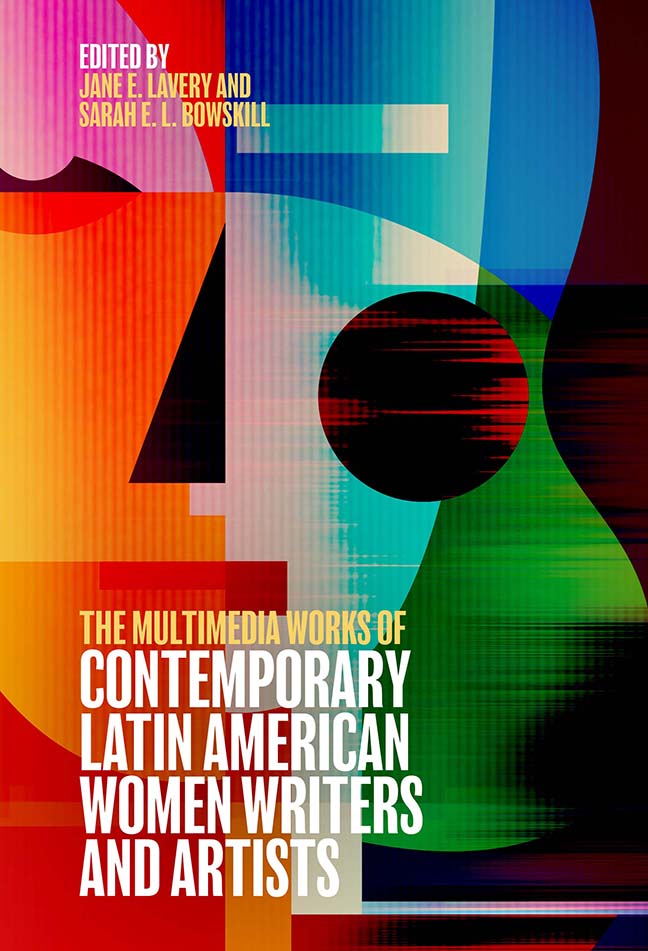Book contents
- Frontmatter
- Contents
- List of Illustrations
- List of Contributors
- Acknowledgments
- Introduction: A Crosscurrent of Contemporary Latin American Women Multimedia Writers and Artists
- 1 The Transliterary: The Novel and Other Multimedia Horizons Beyond (and Close to) the Textual
- 2 Commentary on Fe/males: Sieges of the Post Human (Transmedia Installation)
- 3 An Anthropophagic Ch’ixi Poetics
- 4 My Relationship with Artistic Creation Began with Words
- 5 Imagetext
- 6 Voices/Bodies
- 7 Redefining Meaning: The Interweaving of the Visual and Poetic
- 8 The Territory Is Home
- 9 Reflections on a Multimedia Practice
- 10 Digital Weaving
- 11 Eli Neira, Regina José Galindo, and Ana Clavel: “Polluting” Corporealities and Intermedial/Transliterary Crossings
- 12 The Digital Condition: Subjectivity and Aesthetics in “Fe/males” by Eugenia Prado Bassi
- 13 The Transmedia, Post-Medium, Postnational, and Nomadic Projects of Pilar Acevedo, Rocío Cerón, and Mónica Nepote
- 14 The Art of the Hack: Poets Carla Faesler and Mónica Nepote and Booktuber Fátima Orozco
- 15 The Places of Pain: Intermedial Mode and Meaning in Via Corporis by Pura López Colomé and Geografía del dolor by Mónica González
- 16 Words, Memory, and Space in Intermedial Works by Gabriela Golder and Mariela Yeregui
- 17 Fungibility and the Intermedial Poem: Ana María Uribe, Belén Gache, and Karen Villeda
- 18 Hypertext and Biculturality in Two Autobiographical Hypermedia Works by Latina Artists Lucia Grossberger Morales and Jacalyn Lopez Garcia
- 19 Dialogues Across Media: The Creation of (New?) Hybrid Genres by Belén Gache and Marina Zerbarini
- Bibliography
- Index
- Tamesis
16 - Words, Memory, and Space in Intermedial Works by Gabriela Golder and Mariela Yeregui
Published online by Cambridge University Press: 17 December 2023
- Frontmatter
- Contents
- List of Illustrations
- List of Contributors
- Acknowledgments
- Introduction: A Crosscurrent of Contemporary Latin American Women Multimedia Writers and Artists
- 1 The Transliterary: The Novel and Other Multimedia Horizons Beyond (and Close to) the Textual
- 2 Commentary on Fe/males: Sieges of the Post Human (Transmedia Installation)
- 3 An Anthropophagic Ch’ixi Poetics
- 4 My Relationship with Artistic Creation Began with Words
- 5 Imagetext
- 6 Voices/Bodies
- 7 Redefining Meaning: The Interweaving of the Visual and Poetic
- 8 The Territory Is Home
- 9 Reflections on a Multimedia Practice
- 10 Digital Weaving
- 11 Eli Neira, Regina José Galindo, and Ana Clavel: “Polluting” Corporealities and Intermedial/Transliterary Crossings
- 12 The Digital Condition: Subjectivity and Aesthetics in “Fe/males” by Eugenia Prado Bassi
- 13 The Transmedia, Post-Medium, Postnational, and Nomadic Projects of Pilar Acevedo, Rocío Cerón, and Mónica Nepote
- 14 The Art of the Hack: Poets Carla Faesler and Mónica Nepote and Booktuber Fátima Orozco
- 15 The Places of Pain: Intermedial Mode and Meaning in Via Corporis by Pura López Colomé and Geografía del dolor by Mónica González
- 16 Words, Memory, and Space in Intermedial Works by Gabriela Golder and Mariela Yeregui
- 17 Fungibility and the Intermedial Poem: Ana María Uribe, Belén Gache, and Karen Villeda
- 18 Hypertext and Biculturality in Two Autobiographical Hypermedia Works by Latina Artists Lucia Grossberger Morales and Jacalyn Lopez Garcia
- 19 Dialogues Across Media: The Creation of (New?) Hybrid Genres by Belén Gache and Marina Zerbarini
- Bibliography
- Index
- Tamesis
Summary
Contemporary Argentine artists Gabriela Golder (1971) and Mariela Yeregui (1966) have built – working as individuals and together – robust career paths within the fields of video, performance, installation, and new media art. One distinctive aspect of their oeuvre is the prominence of the literary/poetic evident in the way they deploy verbal resources. However, this literary dimension, being as it is part of the intermedial nature of their overall multimedia works, has often been neglected by critics. The reason might lie in the artists’ backgrounds as they have been identified with visual and audiovisual arts.
Although contemporary art practices usually deny genre and disciplinary borders, it can be said in a broad sense that Golder has roots in videoart and Yeregui has been for a long time primarily involved in the development of electronic arts in Argentina. But in both instances a considerable part of their work has a literary thrust. The works to be analyzed in this chapter are installations, performances, urban interventions, and net art projects that can also be related to literary genres and practices such as poetry performance, electronic literature, and urban visual poetry interventions. These multimedia, multimodal, and literarily oriented works engage intermedially with “literature” by either generating “new” verbal texts, or, as it will be shown here when analyzing specific works, appropriating other texts including print-medium literary/poetic genres.
Intermediality will be considered here as a way in which several languages and media intertwine in order to develop a different artistic experience only possible in the “in between.” Works that can bear intermedial nuances interweave not only different media, for instance cinema, video, photography, books, or the Internet, but different languages or modes of discourse: verbal, visual, sonic, haptic, etc. It is usual to speak then of multiple media and languages in terms of a multimedia and multimodal perspective (Kress and van Leeuwen). One step further, intermediality can be seen as a particular way of understanding this multiplicity.
- Type
- Chapter
- Information
- Publisher: Boydell & BrewerPrint publication year: 2023

